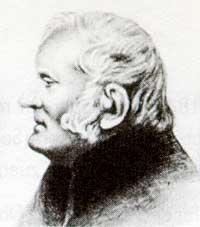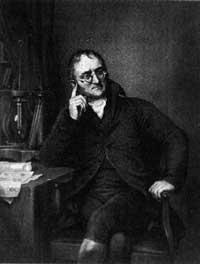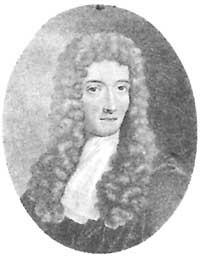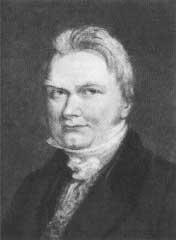Dalton, John
1995/08/02 Azkune Mendia, Iñaki - Elhuyar Fundazioa | Kaltzada, Pili - Elhuyar Zientziaren Komunikazioa
(1766-1844)
This English physicist and chemist moved to Eaglesfield in Cumberland on September 6, 1766. His parents were cuaqueros and his son John was so during his life. At only twelve years old, he had to practice as a teacher in a school of cuaqueros, and the tendency to scientific issues arose with upbringing.

The first field was meteorology, inventing and manufacturing the instruments themselves. In 1793 he wrote the book Meteorological Observations and Essays, one of the first on meteorology. Although Dalton took care of chemistry, he continued to collect weather data for forty-six years until his death.
Dalton discovered that human sight sometimes does not distinguish colors, as Dalton had that disease. That's why this color blindness is sometimes called dychromatopsis or color blindness. However, in 1794 he reported this disease.
Since then Dalton worked in the field of chemistry, but the truth is that not differentiating colors is a great obstacle for the chemist, since this is the one he needs.
Dalton did not stand out for his chemical tests, nor for the conferences that were very fashionable at the time. Dalton gained fame for his interpretation of facts. As for the gases, he certainly said they were composed of particles. He formulated the "Dalton Partial Pressure Act." This law establishes that the pressure exerted by each of the components in a mixture of gases is what would take place if the temperature remained the same, if the gas reached the entire volume.
Dalton extended the particularized character of the gases to the rest of the matter. The law of definite proportions, announced by Proust, indicates that if a compound contained two elements in a proportion of one in three, it would never have had them in a ratio of 3.1 /1 or 2.9/1. This law is easily understood if the compound is considered to consist of indivisible particles. If the particle of one element weighs three times that of the other and the compound is formed from a graft, the weight ratio is always one of three and never 3,l/1 or 2,9/l.
Based on this, in 1803 Dalton announced the law of multiple proportions. Democritus clearly saw that it was similar to the theories expressed twenty-one centuries earlier, so he called indivisible particles "atoms" because Democritus used this word. However, it was Dalton's chemical theory and Democritus's philosophical theory.
According to Dalton, all known substances were formed by different combinations of atoms. He also said that the atoms of one element were exactly the same, even if they were unequal to the atoms of another element. He said they were different in Mason, enunciating for the first time quantitative atomic theory. The first table of atomic weights was also the same. In 1808 he published the work entitled New System of Chemical Philosophy, revealing his entire theory.
In 1810 he wanted to host the "Royal Society", but Dalton did not accept it for being a cuacero. In 1831 he collaborated in the creation of the British Association for the Progress of Science and in 1832 he was given the title of Doctor in Oxford.
He died on 27 July 1844 in Manchester.

Gai honi buruzko eduki gehiago
Elhuyarrek garatutako teknologia






